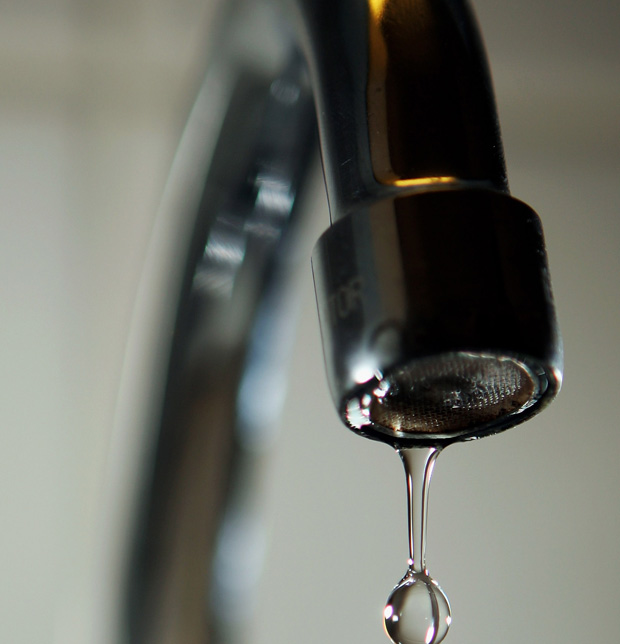More than 10 years ago, in the small Northern Ontario First Nations community of North Spirit Lake, a circuit board broke in the water treatment plant, and the population had to start boiling their drinking water.

Now, a decade later, the circuit board has been fixed, but continuing issues with low chlorine levels mean that the water is still unsafe to drink. So, all of the approximately 460 residents are still boiling their water, said Chief Rita Thompson.
JUMP TO MAP OF WATER ADVISORIES IN FIRST NATIONS COMMUNITIES
In 1995, another Northern Ontario community, Neskantaga, had to start boiling its water because of inadequate disinfection in its water distribution lines. Despite government investment, the problem remains. A temporary solution, a reverse osmosis purification unit, was put in place to provide drinking water until the water system is fixed.
In Pikangikum, Ontario, almost none of the 2400 residents have tap water in their homes. Most people visit one of a few water distribution points in the community, fill up their jugs, and go home with water that usually, but not always, can be consumed without boiling it first.
“Since I remember, I haven’t had any water,” said Chief Jonah Strang of Pikangikum. He doesn’t expect that residences in his community will get piped water until at least 2015, as first, they need to get sufficient electrical power to run a water system, and then they can start working on water and sewer construction.
In Kitigan Zibi, Quebec, about two hours’ drive north of Ottawa, a few isolated homes are served by wells contaminated with traces of naturally occurring uranium.
- Posters promoting ‘Steal From Loblaws Day’ are circulating. How did we get here?
- Video shows Ontario police sharing Trudeau’s location with protester, investigation launched
- Canadian food banks are on the brink: ‘This is not a sustainable situation’
- Solar eclipse eye damage: More than 160 cases reported in Ontario, Quebec
These communities’ problems, while perhaps extreme, are not that unusual. According to Health Canada records, on October 31, 2011, more than one in five First Nations communities were under a drinking water advisory.
Through Access to Information legislation, Global News obtained a list of drinking water advisories in First Nations communities. The data provided a snapshot of water issues on reserves, revealing that on October 31, 2011, there were a total of 168 water advisories in 127 First Nations communities across Canada.
In some cases, only a few buildings are affected. In others, virtually the entire population of a reserve has been asked to boil their water.
Drinking water advisories are issued as a preventative measure to protect public health from contaminants that are known to be, or could be, in the water. They might be trigged when tests reveal things like high disease-causing bacteria levels or cloudiness in the water.
A boil water advisory means that drinking water must be brought to a rolling boil for at least one minute before it is safe to consume. A boil water order is usually issued when evidence shows that drinking water might be responsible for an outbreak of illness. In the case of a do-not-consume advisory, water should not be drunk, even when boiled.
According to Health Canada, the vast majority of advisories in First Nations communities are quickly resolved – at least 90 per cent of them within one year.
But in 2011, the average duration of an advisory in a First Nations community was 772.6 days – more than two years. This figure has increased over the past decade, said Health Canada, because unresolved issues drag the average upwards.
According to Health Canada’s data, 38 per cent of advisories on October 31, 2011, were in place for five years or more. 70 per cent were in place for more than two years.
“Drinking Water Advisories issued under provincial legislation are common in small and remote communities across Canada,” said a statement from Health Canada. It is difficult to determine whether these advisories are more common on reserves than elsewhere, because each province has its own standards for drinking water quality and when an advisory should be issued.
All remote communities face very high costs to import equipment and construction materials. First Nations communities also face difficulties in finding and retaining qualified water system operators, says a Library of Parliament report.
“The primary responsibility for drinking water supply and facilities in First Nations communities in Canada falls to the First Nations,” said a statement from the Department of Aboriginal Affairs and Northern Development.
According to the department, the Government of Canada will have invested approximately $2.5 billion in water and wastewater infrastructure in First Nations communities between 2006 and 2013.
But a risk assessment by the department from April 2011 estimates that it will take another $1.15 billion to upgrade existing water and wastewater systems up to federal and provincial guidelines.
We have mapped the drinking water advisory data from Health Canada below. Click a point for details.
Map of First Nations with Drinking Water Advisories on October 31, 2011




Comments